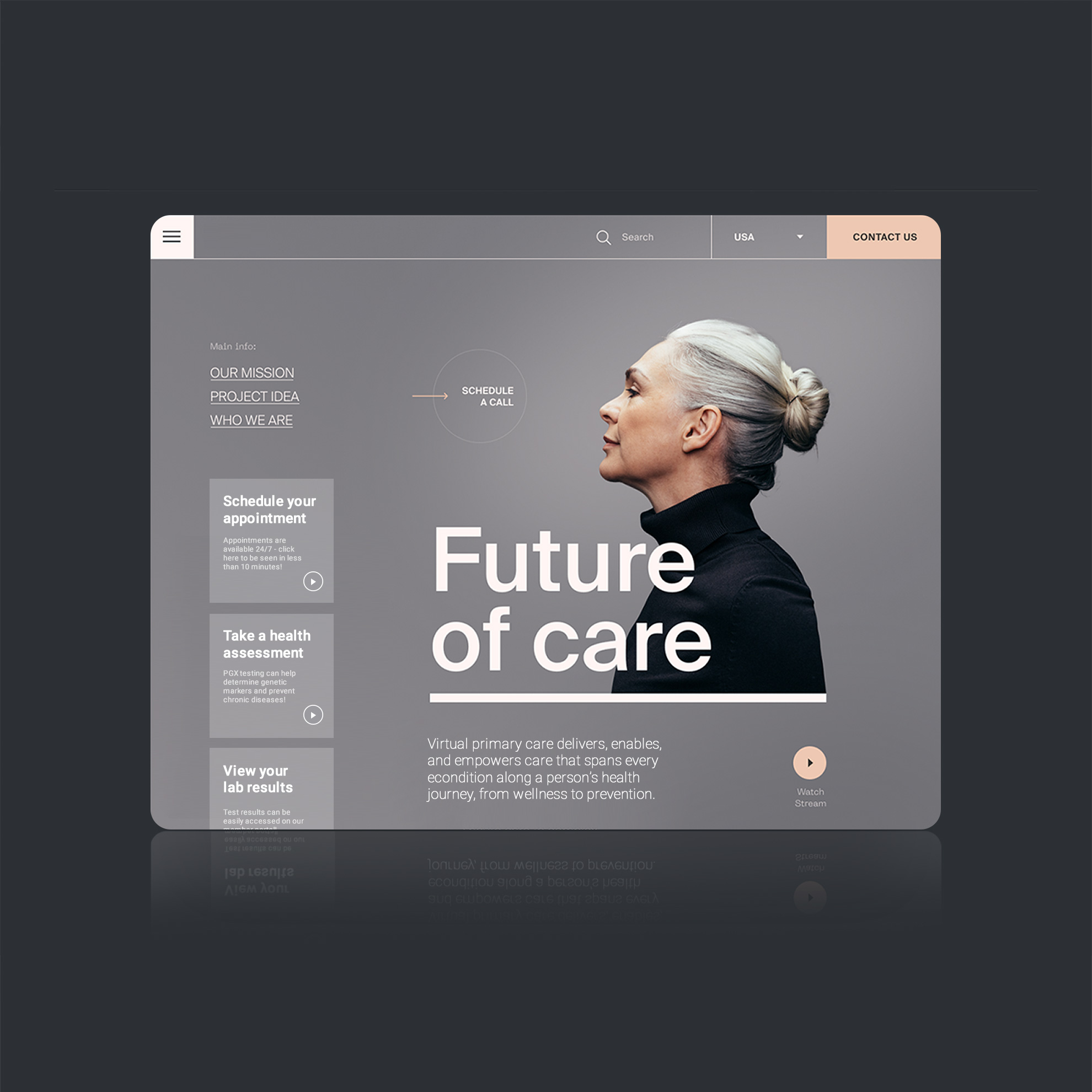Artwork Source: Eslam Mhd
Artwork Source: Eslam Mhd
Transform the Patient Experience with New Marketing Techniques.
Healthcare marketing is constantly evolving, with changes driven by technology, patient behavior, and privacy legislation. It’s important for healthcare organizations to stay aware of the latest trends influencing ways to attract new patients and strengthen existing relationships in order to stay relevant, establish trust, and increase revenue. Here are the top 10 trends impacting healthcare marketing today.
1 – AI Driving Personalization in Healthcare Marketing
Marketing professionals in the healthcare industry are continuing to seize on patient expectations for more personalized communications. They are creating marketing materials and communications to drive constant engagement and nurture loyal customers. Doing so requires vigilance to maintain HIPAA compliance with every contact, but the rewards can result in greater brand awareness, more individualized care and recommendations, and customized treatment plans based on patient demographic information and needs and interests. Healthcare marketers are turning to AI-powered analytics to segment groups based on vital criteria. AI can quickly analyze electronic health records, patient histories, and behaviors to make every marketing message more relevant, engaging, and informative for the patient. AI also helps marketers better allocate marketing resources to focus targeted marketing campaigns on audiences, anticipate future trends, and take proactive measures in the care of patients.
2 – Accessibility & User Experience Continues to Matter
A responsive, well-designed website that is always relevant, easy to navigate, and invites active participation between patients and providers is vital. The website must serve as a direct line for patients to their providers with a range of features that can include two-way chat, online appointment scheduling, directions, hours, and emergency contact information. Patients should also have access to lab and medical records, prescription refill requests, billing records, and other protected health information through HIPAA-compliant, secure patient portals. With a website developed around the user and patient experience, physicians and staff spend less time answering phones and handling clerical issues. That means more time for healthcare providers to see patients and reduced waiting times for patients to receive care. The site should also provide added-value, educational content in consumer-favored formats like video and animation that make the user experience more engaging. In 2021, W3C (an international organization which creates standards for the World Wide Web) released WCAG 3.0 which outlined accessibility guidelines for the internet. In July 2023, they released an update for 3.0 based on feedback from internet users. So, for many, the focus in the later part of 2023 was on accessibility and making their websites as accessible as possible. And this is a trend that will continue in 2024. Website accessibility is complex and involves most aspects of your website. However, it is incredibly important. By implementing the correct accessibility practices, you are opening up your website to everyone who can access the web and making your website an enjoyable experience for everyone.
3 – HIPAA Continues to Play an Important Role
As healthcare marketers continue to explore ways to personalize marketing communications to optimize relevancy, it grows increasingly important to make sure that all Protected Health Information (PHI) be handled according to HIPAA’s Privacy Rules. It is imperative for healthcare organizations and the companies they do business with to step up the measures taken to make retargeting campaigns HIPAA-compliant and explore and adopt privacy-friendly alternatives for effective marketing and engagement campaigns without violating patients’ privacy. These would include advanced encryption and security measures and implementing blockchain technology to allow for the secure transmission and sharing of information among authorized entities. Healthcare organizations are increasingly turning to Customer Data Platforms (CDPs) to combine data from websites apps, and other touchpoints, and integrate with consent management platforms. They provide technical and physical safeguards to protect PHI using encryption, data storage security, and controls placed on access to the information. However, not all CDPs are HIPAA-compliant so verification is important to avoid potential HIPAA violations.
4- Multi-Channel Marketing Integrates Patient Communication
More healthcare organizations are recognizing the benefits of reaching out and engaging patients with the same messages across popular tools and platforms. Multi-channel marketing encourages consumers to respond and connect on preferred devices at any time of day from any location. It gives organizations greater visibility and exposure than relying on single-channel marketing campaigns and gives them the ability to align and reinforce messaging with the stage of interest of the patient. With a multi-channel healthcare marketing strategy, organizations maximize marketing resources and deliver content based on patient behavior and demand to access care in the ways that patients consume information. A multi-channel strategy also lets organizations collect, analyze, and optimize patient and consumer information collected throughout the marketing journey to create even more finely tuned and targeted communications.
5 – Local and Location-based SEO for Success
Consumers in need of a healthcare provider’s services, equipment, and care will continue to rely on search engines to get them the results they want, making a sound healthcare SEO marketing strategy essential. Healthcare SEO must be centered around the patient, focused on the keywords and search terms they would use, and prioritize link building to high-quality sources to establish credibility. In particular, the importance of local SEO will continue to impact the way healthcare organizations can be found on the web and build an online presence in specific geographic locations. It improves opportunities to attract patients and consumers throughout the local communities they serve and sell to. A Google Business Profile is essential to provide local patients with information to efficiently find important contact information and locations on Google Maps.
6 – Social Media Marketing
Social media continues to prove itself valuable in the healthcare industry. In fact, one study showed that 57% of consumers said a medical facility’s social media presence would strongly influence their choice regarding where to go for medical services. Social media is an excellent tool to use to convey healthcare information to new patients, as well as health outcomes and a great deal more. If your healthcare organization isn’t currently using social media, now is a great time to start. Every photo on Instagram, Tweet on X or Video on TikTok can bring you one step closer to converting an online user into a new patient. Here are a few ideas about how you can use social media to reach your audience:
- Use user-generated content to answer commonly asked questions
- Collaborate with influencers on social media platforms to generate a discussion surrounding your medical practice.
- Humanise your medical practices
- Create a network on each of your social media platforms where your patients feel part of your practice and connected to you.
7 – Attract and Engage Members
38% of people will stop exploring a website if the layout is unattractive or the content isn’t engaging. This means that any snag on your site, or any bad content will cause over a third of visitors to leave. A continued look at your website and other digital channels will be needed in 2024 to keep your audience engaged. A lot of the technical snags that can lead to an unattractive website can be solved with SEO audits which we mentioned in the voice search section above. Regular audits of your content and a solid content strategy are needed to ensure that every piece of content on your site looks great, entertains users and provides information that they will find helpful. Here’s a brief look at some content that medical practices should be using to engage their users:
- Case studies – real-world success stories from past patients
- E-books or guides – discuss the treatments provided in detail
- Webinars – host live webinars on relevant health topics, encouraging interaction and questions from participants.
- Health challenges – sugar-free challenges or fitness challenges, for example, to encourage healthy habits.
8 – Video Continues to Drive Patient Engagement
Healthcare marketers are continuing to capitalize on and create new ways to use video to drive consumer engagement. Healthcare video helps break down and simplify the complexities of care and medical devices and lets patients gather information when convenient. Organizations can affordably create video and animated content that highlights services and educates patients that are viewed on websites, social media platforms, and, increasingly, through QR codes and augmented reality (AR). Video is the way people get information today, and more patients are turning to video content to stay informed and engaged. Streaming video connects organizations and patients with over-the-top (OTT) and connected television (CTV) advertising to reach audiences across devices and screens. Healthcare marketers also find video an effective way to introduce products and services to busy physicians and healthcare providers with webinars or video demonstrations.
9 – Reputation Management is a Marketing Asset
Healthcare organizations hold positions of importance and are held to high standards in their communities, making reputation management a high priority. They must expect that before a prospective patient or customer makes a decision, the person is going online to seek out reviews and recommendations to qualify and justify continuing the relationship. It requires continual vigilance to prevent an unpleasant experience of a patient from snowballing into a public relations nightmare that drives consumers away. It also means that positive reviews can become a source for lead generation, help improve the services and care offered, and benefit brand appeal. Rather than treating customer reviews and recommendations as a chore for customer service, savvy healthcare organizations are managing these engagements and collecting reviews to improve visibility on the internet and gain high search page rankings. They’re proactively encouraging online reviews to leverage the power of social media to broaden their community and build trust through the advocacy of their patients. Healthcare organizations face unique challenges in attracting patients and engaging with the ones they have. As consumers continue to embrace new technologies and gather information on multiple platforms, organizations must develop healthcare marketing strategies that promote trust and instill confidence in every contact.
9 – Reputation Management is a Marketing Asset
Healthcare organizations hold positions of importance and are held to high standards in their communities, making reputation management a high priority. They must expect that before a prospective patient or customer makes a decision, the person is going online to seek out reviews and recommendations to qualify and justify continuing the relationship. It requires continual vigilance to prevent an unpleasant experience of a patient from snowballing into a public relations nightmare that drives consumers away. It also means that positive reviews can become a source for lead generation, help improve the services and care offered, and benefit brand appeal. Rather than treating customer reviews and recommendations as a chore for customer service, savvy healthcare organizations are managing these engagements and collecting reviews to improve visibility on the internet and gain high search page rankings. They’re proactively encouraging online reviews to leverage the power of social media to broaden their community and build trust through the advocacy of their patients. Healthcare organizations face unique challenges in attracting patients and engaging with the ones they have. As consumers continue to embrace new technologies and gather information on multiple platforms, organizations must develop healthcare marketing strategies that promote trust and instill confidence in every contact.
10 – Influencer Marketing & Thought Leadership
Influencer marketing in healthcare involves partnering with influential individuals in the healthcare industry. That can include people such as doctors, nurses, or healthcare advocates, with the goal to promote products, services, or health-related causes. These influencers have the trust of their followers, making their endorsements valuable. Influencer marketing leverages the trust and credibility of healthcare influencers to convey healthcare messages effectively. It’s one of the most important healthcare marketing trends because it extends reach, enhances credibility, and provides authentic endorsements in a field where trust is paramount. Identify healthcare influencers with a genuine following and expertise relevant to your organization. Collaborate on content that educates, informs, or advocates for health-related topics. You can also promote influencer-generated content through your marketing channels. Here’re some other reasons why influencer marketing is one of the leading healthcare marketing trends:
- Extended Reach: Partnering with healthcare influencers extends your reach to a broader and more engaged audience.
- Enhanced Credibility: Influencers bring trust and credibility to your healthcare message. Their followers often value their expertise and recommendations.
- Authentic Endorsements: Influencer marketing provides authentic endorsements. This can be particularly influential in healthcare, where trust is paramount.







